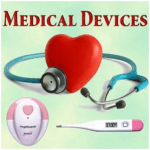Medical Devices Warrant 4 Special Packaging Considerations
 Between strict regulations, product integrity, and the user’s experience, packaging for medical devices demands focused attention. With safety being of grave concern, packaging for these products are almost as important as the contents within. Neglecting to follow certain steps in the planning process can cost a company money and customers.
Between strict regulations, product integrity, and the user’s experience, packaging for medical devices demands focused attention. With safety being of grave concern, packaging for these products are almost as important as the contents within. Neglecting to follow certain steps in the planning process can cost a company money and customers.
The basics of such a packaging system include maintaining the sterile barrier system, protecting the device during transit, and printed communication. Here are the four things you need to do to ensure your package is a success.
- Package design should begin early in product development. Put simply, this step affords you the time to get the entire package right before it needs to be shipped. You need to ensure compatibility between the package and product, identify possible packaging system failures, address the failures, and evaluate different barrier systems. If this is put off too long, people will take short cuts to meet deadlines, and that’s when you’re especially susceptible to noncompliance. Save time to test the system. Both validation and patient safety are protected when you plan ahead.
- Ensure all packaging components are the right size. When packaging elements aren’t the right size for the device, resulting package failure commonly leads to loss of sterile integrity. Brian Whalen exemplifies this in his Packaging Digest article, “3 Steps for Designing the Ideal Medical Device Packaging System:”
“For example, if the backer card is too large, constant pressure will be placed on the pouch seals. If it is too small, excessive motion within the pouch will create friction and abrasive forces. A pouch or tray lid within a shelf box that is too large will need to be folded or creased; one that is too small will be subject to repeated contact against the inner box, all of which cause stress and fatigue leading to pinholes and pouch failure.”
Particularly sensitive medical devices might need customized packaging similar to that of certain electronic components. This may require working with a packaging company that specializes in custom systems for fragile components. Here is an example of a solution that Packnet designed for this situation.
- Execute a vigorous testing protocol. The testing process is critical in this industry, so you need to do it right every time. A comprehensive protocol includes things like scope, sample size, acceptance criteria, responsibilities, and production equipment. The 2006 ISO 11607: Packaging for Terminally Sterilized Medical Devices includes current testing guidelines. ISTM and ASTM also offer test methods specific to ISO 11607 compliance. The project team may need to collaborate with an ISO 17025 accredited laboratory for some specific medical device packaging.
- Consider the big picture – large items and the big boxes holding small items. Some medical devices aren’t small pieces shipped in bulk. Some are large machines or fragile equipment. The same rules apply to those, but the right packaging may involve a professional. It’s paramount that monitors and other equipment arrive intact, so it’s critical that the container be the right size, and that internal protection is perfect. Here’s an example of a solution a medical device company found for its sensitive equipment and computers.
Consideration of large packaging needs to be made for small packages, too. With the care and caution poured into the packaging system, you also want to ensure that bulk contents fit snugly into its container, and that the container itself is the appropriate material, strength, and size for the trip. Again, you may want to contact a professional packaging company with any concerns to make sure you cover your bases.
With careful planning and execution, you can avoid mistakes and extra costs associated with medical device shipping. If you need advice or consultation on any special packaging needs, reach out to Packnet by phone (952.944.9124) or request a free assessment.

